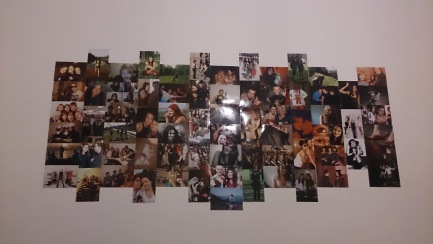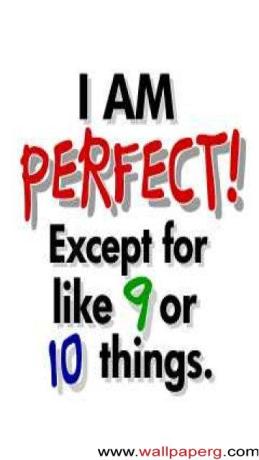As life is moving deeper and deeper into digital existence, it’s important to discuss the change of society models: a change towards the digital self, creation and adaptation to imagined communities (however, in a slightly different sense to Benedict Anderson’s imagined communities). A few years back I watched a video on anthropology of Youtube and it all triggered a deep interest in the topic. Now, working with audiences on YouTube every day and helping to create a tailored content for them, I often wonder about the communities created (imagined). Why do these people like this content? Who are all these people behind the countless usernames and avatars? Is this brave and aggressive person actually really shy and obeying in the life offline? Have the BFFs online ever met or will ever meet outside of this platform?
The ‘self-image’ is the key to human personality and human behaviour. Change the self image and you change the personality and the behaviour. [Maxwell Maltz]
In my mind, this is exactly the quote to describe the individuals in modern digital societies. You can be whoever you want to be, there are no restrictions, no borders and no end to imagined communities. There’s even no time when it comes to our digital personae – you can exist everywhere and nowhere at the same time. Time doesn’t work the same way online as it does offline.
Identity & the concept of imagined community
Identity, the notion of “the self”, community, cultural change and social networks have been popular themes in anthropology and sociology from the beginning when writers like Karl Marx, Max Weber, Emile Durkheim, Marcel Mauss, Alfred Radcliffe- Brown, Edmund Leach and others were debating community ties and individuality. Identity construction has always been linked to modernity and self-consciousness; for example, Mauss’ idea is that the person is the self; the notion of the self involves consciousness shaped by our mental and physical being (Mauss 1985[1938]: 1).
So this tells us – identity is a big part of the concept of self. Self is the totality of person’s thoughts, feelings etc. with regards to oneself as an object (Rosenberg, 1986). In this wide concept, our identity is whatever we show to ‘the others’, it is whatever others know us by (Altheide, 2000, p.2). To create an identity it’s not enough only deciding on our personality traits and claiming them ours, it’s also about others accepting these claims and associating us with our chosen identity (Stone 1989, p.188 – “coincidence of placements and announcements.”). In other words, in every community, online and offline, there is a need of acceptance by others, both – as part of this group and as the individual you have chosen (and been accepted) to be.
Identity in local (face-to-face) interaction is constructed based on rules of the certain setting. The physical existence at that point is what constraints and prevents people claiming more daring identities that would not fit their real life offline characteristics from social background and race to looks and gender. (Zhao S.; Grasmuck S.; Martin J., 2008, p.2 (p.1817)). These restrictions might be lower when interaction happens between two strangers, but let’s be honest, we’ve all seen someone trying to bullsh*t us into thinking they are something they’re not… it has its limits!
I mentioned in one of my earlier post that “people do have aesthetic addiction to objects and there is a great need for that physical proof of existence no matter how digital we are.” Even in the digital sphere we need to have a certain personality and traits. We need to prove to someone else we are a fan of this band or that we are interested in a certain type of sports etc. And even though we cannot physically touch or sometimes verify this information it is still important to us.
Considerations such as these can help us appreciate the notion of „imagined communities‟ (B. Anderson, 2006), both virtual (social networks, high-tech communication) or physical. Anderson’s work has been noted as one of the most influential works on imagined communities in anthropology nowadays and fairly so. His theory on imagined communities, when talking about creation of nations, is easy to weave in discussion on digital communities even though they are fundamentally different. The main point Anderson raises is that the communities are imagined because even in the smallest of them there is no chance that all the members know each other, however they do experience the sense of communion.
Digital self and the creation of identity online
Internet as most might argue has opened a way for expressing yourself in more ways than offline life ever could. Everyone can become an artist with their own gallery that will not cost a penny on Flickr, everyone can own a blog and become a writer in hopes someone would read their work, feed-back on it wherever they might be without leaving their homes or spending money on editors or post. However, these are just the few examples of internet extending the opportunities based on our ‘real-life’ interests. Main thing I am interested in is why do we seem to change our identity online and does it have an impact on our offline one? One’s identity often differs from that adopted in different online settings that may vary from anonymous to full exposure of the ‘real’ identity.
Internet has changed the traditional ways of how we look at ourselves, meaning there is also a way for us to make others see us differently. Internet has changed the rules of identity creation. More so, there is no need to stick to one identity. It is mainly due to the fact of the ‘missing physical body’ giving space to the disembodied text. And it can go the opposite way where even with the physical characteristics being visible we withhold any or some information about the off-line personae, giving us the control over our new desired identity. Tempting isn’t it?
S. Turkle (2011) points out that the creation of a ‘greater amount of culture’ doesn’t mean we are more sociable though, quite the opposite, we might have lost some of the sociability with the expansion of digital. She bases this on the fact that technology makes us less human. So is this one of the triggers that makes us to hide our real life self behind countless put on identities that might change some undesired physical or character traits? It can go to ridiculous lengths such as change from introvert to extrovert or even a digital change of the gender. And it can be empowering. This phenomenon of online roles has been researched a lot and it seems to me that our online identities are markers for what we secretly want to be, our hidden self which might be restricted in face-to-face interactions due to wide range of obstacles such as social background, race, gender and physical features.
One thing in my mind separates the concept of identity creation online and offline is the acceptance of your identity by others. Face-to-face interaction will always require the model described before where you claim the identity and others either accept it or declined it based on what they see before them. In my opinion, online identity creation is much easier to achieve as the other members of the online community will have to accept your identity the moment you claim it as they can’t verify details you don’t want to reveal about yourself, such as age, gender, race etc. (Not talking about stalkers here though, stay safe! ).
We have to remember however that no matter how limitless the online identity can be, there are some pre-determined parts of us and anchored offline relationships we carry with us to our online identity. People know people offline and interact with them online, get acquainted with the friends of their friends, losing some of that freedom of anonymity in the process. Let’s take G+ accounts as an example or even Facebook. Everyone is linked. Google learns information on our location, interests, etc. and based on that not only caters the advertising to our preferences but also suggests the connections – old classmates, people living in your town, people you have mutual friends with. This again implements certain constraints to identity claims.
So even though we could argue that identity online is the ultimate freedom and you can become whoever you want to, there are aspects that restrict this freedom from being limitless.
Is freedom anything else than the right to live as we wish? Nothing else. [Epictetus]
YouTube’s example of identity creation
YouTube as you probably know is the most viewed video-sharing site in the world and the third most visited website in the world overall behind Google search engine and Facebook (Alexa, 2015). Created in 2005 by three former employees of PayPal to make video sharing easier and sold to Google in 2006, YouTube has grown to be one of the most simple but at the same time one of the most complex networks on the web nowadays.
Most of the content is uploaded by individual users with 300 hours uploaded every minute in 2014 which was 3 times more than the year before and it’s still growing (YouTube data). Some of these individuals who create videos become highly influential and have a certain say in the creation of the identities of others, especially those of the younger age group. But is it only affecting their online identity? Or do they influence the everyday life decisions, choice of certain material things, choice of travel destinations and so on. And it works both ways. Influential or not, there are physical beings behind these online roles with feelings and choices. Creating an account on YouTube and putting time into making videos is one of the most popular ways to express ourselves for the new tech-savy individuals.
New media not only introduce new ways for us to express ourselves, but also new forms of self-awareness – new ways to reflect on who we are and how we relate to others [M. Wesch, 2009]
However, it is not only about ‘broadcasting ourselves’ as Youtube kindly invites us to do. It is about co-creation instead of creation – substitution of camera with community by letting them influence the content. What makes a successful YouTuber? Listening to your audience, letting them participate in making of your channel. “Let us know in the comments below, thumbs up if you like this video and subscribe for more” has become one of the most important phrases people add to their videos and it is working. Why? Because people love to be in charge as a default, they feel special when their suggestion is the one chosen from tons of comments and that makes them feel even closer to the person that seems to be the centre of this imagined community. The more appreciation you get from the influencer, the higher you step in the community, which is still in its core horizontal, anonymous and imagined. And it doesn’t end there, you can be a part of as many communities as you want, the more you surface online the higher the possibility to become influential even though this might not have any effect on your offline life.
Something to think about? Always.
Further readings:
- B. Anderson “Imagined Communities: Reflections on the Origin and Spread of Nationalism” (2006)
- S. Turkle “Life on Screen: Identity in the Age of the Internet” (1995)
- A. Acquisti, R. Gross “Imagined Communities: Awareness, information sharing, and privacy on the Facebook”
- H.A Horst, D. Miller “Digital Anthropology” (2013)
- T. Boellstorff “Rethinking Digital Anthropology” (2012)











